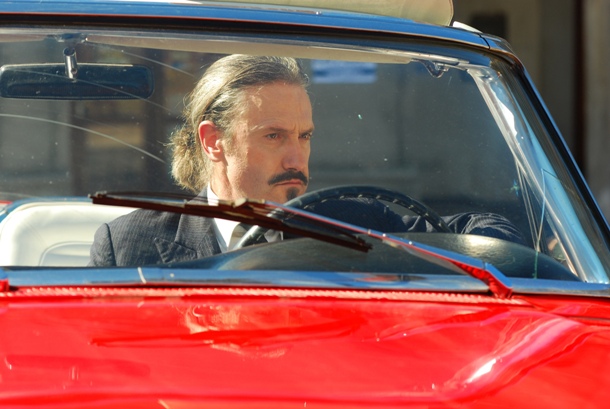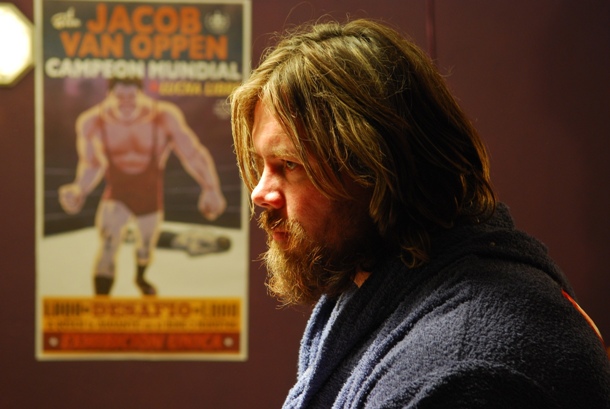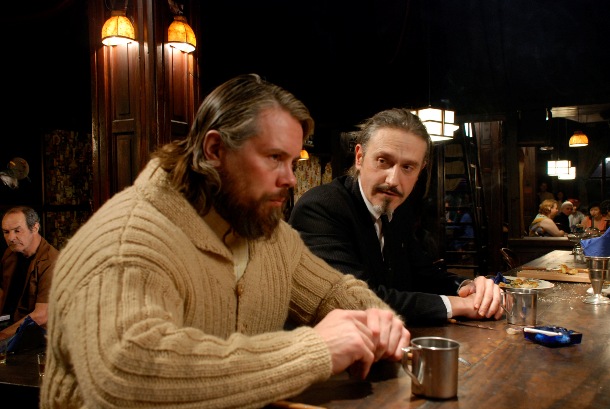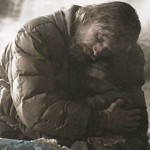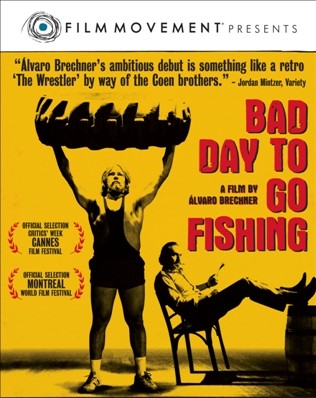 Americans love a good con man.
Americans love a good con man.
Perhaps it is our implicit endorsement of P. T. Barnum’s well-known axiom: “There’s a sucker born every minute.” Perhaps it is our begrudging appreciation for cleverness and intellectual ingenuity, no matter its object. Or perhaps it is our deep-seated respect for the chronic overachiever that has led to our love for these Promethean self-made men whose artful schemes are practiced upon an unsuspecting world—dashing rogues, every one.
That love is nowhere more clearly seen than in film, as the flourishing success of the con artist genre (and its slightly more popular cousin, the heist film) attests. From the recruitment and assembly of a rag-tag team of misfits, to the endless planning and preparations for the big day, to the final breathless success or failure of the scheme in the third act (hopefully accompanied by a double-crossing or two), the steps of the storytelling dance have become comfortably clichéd. Why mess with such a successful formula?
Bad Day to Go Fishing, the feature film debut of Uruguayan director Álvaro Brechner, is an entirely different kind of con film, and its departure from cinematic norms proves both refreshing and insightful. Equal parts warm folk fable and chilling cautionary tale, this wonderfully shot, wonderfully acted work recounts the exploits of Jacob van Oppen, the washed-up, alcoholic strongman whose legendary wrestling bouts once won him billing as “The Strongest Man in the World,” and Prince Orsini, his sharp-faced, sharp-witted manager.
Upon arriving in the small South American town of Santa Maria, the two set about their usual shady activities: arranging (and then rigging) a wrestling exhibition where a local athlete is given the opportunity to spend three minutes in the ring with “The Champ.” In the unlikely (and, until now, unfulfilled) event that said local survives his bout with The World’s (Formerly) Strongest Man, he will receive $1,000 for his pains—a tidy sum, and far more than the two travelers have had for quite some time.
Orsini, all too aware of van Oppen’s declining skills, devises a scheme that will both assure them of the meager gate proceeds they need to survive and leave his “strong man” meal ticket intact enough to fight another day. But when the town’s hand-picked opponent is replaced by a mysterious (and highly motivated) adversary, the manager realizes that his convoluted machinations have not only left him in very real danger of losing his proverbial shirt, but have profoundly undermined the fragile confidence of his simple-minded friend.
Jacob, confused by his manager’s unwillingness to go through with the match, gradually comes to realize that he has been an active, if unwitting, participant in Orsini’s frauds. Deeply hurt by his friend’s dishonesty and lack of confidence, “The Champ” sets out to prove to himself (and to Orsini) that he still has the heart of a champion. In the film’s unexpectedly moving (and violent) climax, Jacob shows not only that he is still capable of greatness, but that his manager’s well-intentioned efforts prevented a return to that very glory from which he had so dramatically fallen.
Compared by some reviewers to the similarly themed American film, The Wrestler, Brechner’s work differs from its stateside counterpart in a number of important ways: chief among them, his decision to focus our attention less on the simple, sorrowful decline of “The Champ” and more on the complex character of his manager. Orsini is no Henry Gondorff or Johnny Hooker; he is a “real world” con man. Hiding from himself as much as from his victims, he spends his life hovering on the outskirts of polite society, employing his dubious-but-undeniable charm with barely enough success to survive. As he journeys from one deception to the next, we see Orsini for what he truly is—a moral contortionist who labors to salve his conscience while living off the trust and confidence of others. This is no dashing rogue, no praiseworthy Prometheus; Orsini’s dry, barren cleverness is neither charismatic nor appealing.
Stripped of the typical trappings of the genre, this is a story about people, not action-packed events. Unlike the majority of its cinematic precursors, this film’s focus is on the transformation of its characters, not the realization of their grand schemes. Jacob and Orsini are both flawed, damaged men who depend on one another for their daily existence because that dependence is easy and familiar, not because it is necessary. Yet both come to realize that their relationship, formed in friendship but watered with indolence, has grown into a Frankensteinian monster, driving the two of them apart.
Despite a lifetime spent misleading friends and suckers alike, Orsini is not beyond redemption. When Jacob is revealed to be far more aware and far more competent than his promoter would ever have suspected, their new-found knowledge becomes the catalyst that transforms them both.
The film’s finale, though ambiguous, is a reminder that we flawed humans must reap what we sow; from the unreasonably idealized con man to the Ordinary Joe, even our seemingly insignificant actions have far-reaching consequences. As Orsini’s life can attest, the Path of Least Resistance always looks good at that first crossroad. But over time, the burdens of sorrow and regret that it slowly adds to our lives prove far more tiring and troublesome than the more difficult choice. The true “long con” is the one we work upon ourselves, seeking ease and success at the expense of the Right and True. That way madness lies.
The Road Less Traveled seems hard, but to look at any path without taking into account its destination is foolish. Despite the steepness and narrowness of that difficult road, we know exactly where it is leading us. And traveling down its dusty pathways will be made infinitely easier by that knowledge.
 Attribution(s): All posters, publicity images, and movie stills are the property of Film Movement and other respective production studios and distributors, and are intended for editorial use only.
Attribution(s): All posters, publicity images, and movie stills are the property of Film Movement and other respective production studios and distributors, and are intended for editorial use only.

